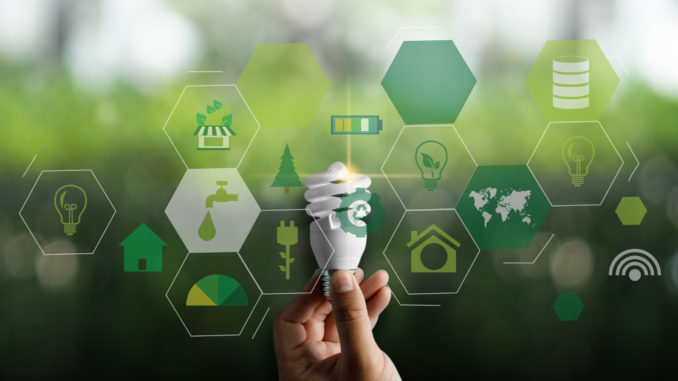
During April 2021, 80 percent of vineyards in France’s primary wine growing areas experienced an unusually severe frost. The destruction to vines could reduce yields by 25 percent to 50 percent in some regions with significant commercial consequences. Less sudden but equally devastating changes in weather patterns present new challenges for society at large. Politicians, city authorities and citizens are looking for better ways to interact with their surroundings and embrace solutions that lead to a more sustainable environment.
In Berlin, for example, shifts in rainfall patterns and pollution levels affect the way that trees need to be watered. Fortunately, the combination of Internet of Things (IoT) technologies with better approaches to data management offers a pathway to a sustainable solution. One initiative, run by an experimental laboratory for the city of the future, involves the tagging of trees for ease of identification, to monitor their status and, to involve citizens in taking care of trees close to where they live. Individuals can adopt one or more trees, for example, and obtain information about correct watering needs. They can then report on when they irrigate their adopted trees. That helps city authorities to maintain a historical record and publish a visualization dashboard of which trees are under care. These activities also simplify the task of neighbourhood coordination and alleviate requirements on the municipality’s fleet of watering trucks.
IoT for Data Sharing
The system in Berlin contains the elements of a basic IoT system. At its heart is the components for identifying and gathering data for each tree through moisture sensors and via reports from citizens. This is a bit like a system with many hundreds of sensors, each reporting at different times of the day. Data are collected in a central repository and made available to different users, ranging from individual citizens, neighbourhood committees and municipal authorities, among others. This system to irrigate the trees in a targeted manner provides the basis for an individual irrigation strategy through permanent data collection and observation fed back by citizen “tree nurses”. The concept is applicable to other situations, including shared-use transport systems and multi-tenant buildings.
Of course, the basic system has to be capable of scaling. This might involve adding new trees to the population being cared for. There is also scope for innovation through the addition of new capabilities. For example, it might add a “gamification” element to reinforce the levels of interaction with local residents. It might explore new use cases by collect data from other sources. An example might involve data from environmental or traffic-measurement sensors, for use in monitoring the wellbeing of individual trees, since town-trees tend to have a shorter life than forest-trees.
Framework for Sustainable IoT
Other cities facing similar challenges as Berlin could replicate its system and deliver an environmentally responsible set of smart city services to their citizens. The concept of re-using technology solutions promotes sustainability as it cuts down on duplicated efforts. Another possibility is for neighbouring and ‘twinned’ cities to find ways to share the data collection and dissemination infrastructure. They could optimize the size of their technical teams, always a difficult recruiting challenge, to leverage economies of scale, which is another principle of using technology sustainability.
Since 2012, the oneM2M standardization organization has laid the foundations for reusable and scalable IoT systems, via horizontal architecture. This provides a framework for “any-to-any” exchanges of data. That means IoT sensors can exchange data with monitoring and decision-making applications, including applications developed and operated by third-party service providers. The standard also allows system designers to mix and match components from different vendors, in a manner that is similar to the way that mobile phones from different suppliers function on networks across the world.
Sustainability Principles for IoT Systems
To encourage the adoption of sustainable services and the use of sustainable technology, oneM2M recently launched a sustainability initiative focusing on three areas. The first of these aims to drive cross-disciplinary discussions and promote ideas that illustrate the impact of IoT on sustainability. The second topic area aims to help developers build IoT systems based on sustainability principles. These include design considerations for interoperability, scalability, modularity, and re-use.
The third focus area relates to capabilities within the oneM2M technical specifications that help developers build sustainable features into their solutions. For example, oneM2M provides a standard way to gather and send data without devices needing to be constantly switched on and polling the network. This is both a boon for energy efficiency and for reducing traffic congestion on mobile networks. The standard also addresses the deployment of IoT systems that combine new assets and legacy infrastructure. The approach taken makes use of an interworking proxy entity (IPE) to standardize the interface between a oneM2M domain and a non-native domain that uses legacy or proprietary technologies. The ability to combine native and non-oneM2M domains preserves the value of installed systems. These generally retain some residual value because they have not reached the end of their operational lives.

Ken Figueredo focuses on IoT eco-system strategy and standardization initiatives for Convida Wireless, an innovation-focused joint venture between InterDigital Inc. and Sony Corporation. He contributes to the oneM2M Partnership Project, the global community that develops IoT standards to enable interoperable, secure and simple-to-deploy IoT systems.
Ken’s other activities include contributions to the ATIS/US Ignite Smart City Data Exchange initiative and the Industrial Internet Consortium. His prior market-development experience includes advising the GSMA in creating its industry strategy targeting the Connected Living/IoT market opportunities. He is an alumnus of INSEAD and holds an Engineering PhD in ‘digital-twin’ algorithms for self-adaptive control systems.



